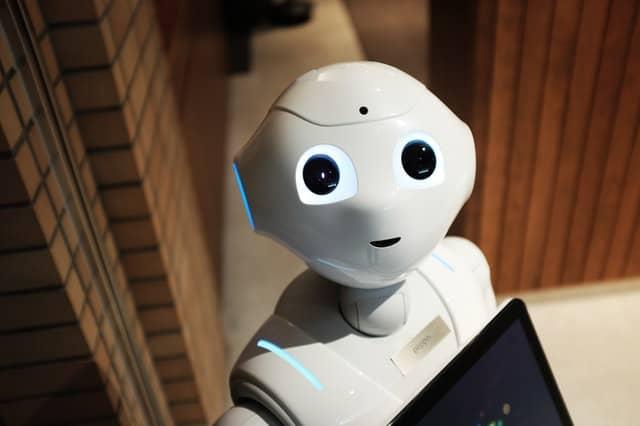Watch Out for These 5 Artificial Intelligence Problems in HR

Artificial intelligence (AI) might be the way of the future in tech, gaming and smart-device industries. When applied effectively, AI can save on human employment costs and, in some cases, can accomplish tasks even better than humans can.
It would make sense for other industries to try to capitalize on AI’s efficiency, versatility and overall power, but for entrepreneurs, applying AI to human resources (HR) poses some challenges.
Understanding AI and the challenges it creates in HR departments
HR professionals may want to put AI to use, at least partly because it can offer predictive analysis for recruiting. When a company is swamped with resumes, AI can scan resumes for those that best fit the skills and responsibilities required for that specific job. In this sense, AI can save HR teams days of sifting through resumes and cover letters.
But applying AI to HR departments isn’t always that simple, and in many cases AI can create more challenges than the problems that it solves. Here are some of those issues, and how you can deal with them.
1. AI won’t understand your company like you or a recruiter can
Although AI might help recruiters quickly scan through a pile of resumes, it lacks the global understanding of a company that recruiters possess. When hiring ideal employees, a recruiter researches a company and develops an understanding of that company’s positioning, direction within the market and even company culture.
AI lacks that same understanding, so when it comes to identifying employees who might be a good fit given the wider global view of the company, AI technology falls short. AI also lacks the knowledge and intuition that recruiters develop from decades in their jobs. AI won’t necessarily spot important connections in an applicant’s past work that might hint that applicant could be an important candidate.
For instance, a recruiter might see that an applicant has worked for a company that underwent rapid growth in the past. That could mean the applicant might be comfortable and flexible enough to grow with a quickly expanding startup. AI won’t make that same connection.
The key here is to consider mixing these solutions, so you receive the benefits of both. For example, you can use AI to help candidates more easily send you their credentials (automatic web forms and the like), but use recruiters and your own experience to narrow down the applicants who may actually be the best fit.
2. You might miss out on hiring outliers
Job applicants who don’t fit all of the strict hiring criteria a company has established might also be overlooked by HR. Some of these outliers could make a strong contribution to a company but might not get an interview because of AI technology used to screen resumes.
Similarly, because AI lacks a human touch, it might approve resumes of applicants who meet all of the required criteria, but who still aren’t ideal applicants for a position. Although it’s smart to use AI to cast a wide net, watch the process closely to keep an eye out for certain characteristics that you want in a new hire. If necessary, schedule time for you and your team to personally assess any candidate if needed.
3. AI can’t account for human emotion
When hiring, companies don’t base their decision-making process on only hard skills. Emotional and psychological traits are important, too, including ambition and passion. AI cannot currently monitor or evaluate human emotion, and it can’t account for how emotion affects human behavior.
AI also cannot account for personalities and how emotion can affect teams. If tasked with finding a new team member to add to an existing team, AI can’t recognize the nuances of team dynamics and how personalities work together. That’s where you and the team come in. Because AI operates without the background understanding of complex human emotions, it makes for a flawed hiring and employee evaluation process. Use it sparingly for actual employee evaluation, and let team members do that themselves.
4. AI can’t ‘read’ people
HR is a human-based, personal operation. AI can’t replace an individual manager’s unique viewpoint or ability to “read” people in person, whether they’re job applicants or current employees. Although companies might incorporate AI solutions into their business models, the technology isn’t ready to take over significant face-to-face responsibilities in an HR department just yet. As mentioned, the technology might be useful in resume screenings, but it needs to be monitored closely and can’t replace talent evaluators (no matter what Elon Musk’s plans are).
5. AI lacks ethical responsibility
Ethical responsibility is key for HR teams today, especially when it comes to hiring minorities, taking action after sexual assault and other hot-button issues. AI lacks the ethical responsibility that HR needs to uphold, and AI can unknowingly become biased, too.
AI technology “learns” from the algorithms that it processes. If AI’s machine learning process is programmed by a human, it can take on the biases of its programmer, even though he or she might be unaware of their biases. With biased technology, a company’s talent acquisition process might unintentionally also be biased. If the hiring process is ever challenged or questioned, the technology cannot be held accountable for the bias, so HR leaders and the HR team need to take on ethical responsibility.
In order to prevent or remedy these occurrences, HR pros have to communicate about such problems to company leadership and programmers. Then, different departments should work together to identify bias, and prevent it from influencing hiring processes.
On another ethical note, if AI can replace a certain number of workers at a company, HR might face the challenging question of deciding which employees to let go. AI might save a company money, but replacing employees with technology can be a touchy ethical dilemma.
Also, certain AI tech can help by actually picking which people to lay off. Discuss whether these types of solutions feel ethically right to you and your team or not. Just who will select the technology, who needs to be retrained or who might be fired in the end? Go carefully and thoughtfully as you deal with AI and how it affects all of these matters.
Thanks for reading! Do you want to create thought leadership articles like the one above? If you struggle to translate your ideas into content that will help build credibility and influence others, sign up to get John’s latest online course “Writing From Your Voice” here.



